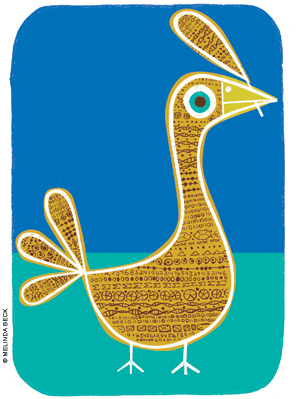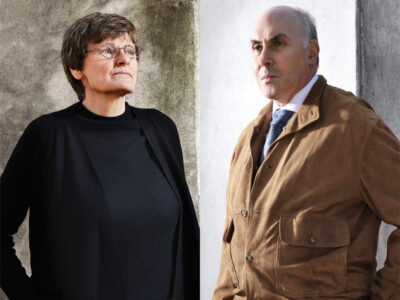
More than three decades ago, when Steve Fluharty C’79 G’79 Gr’81 was doing the thesis work for his doctorate in neuroscience at Penn, his lab got word that it was being “discussed” for a possible Golden Fleece award. This was not something he or anyone else coveted. The late US Senator William Proxmire of Wisconsin bestowed the awards with great media-fueled glee upon publicly funded projects that he and his staff concluded had wasted taxpayer money. And they had a fondness for arcane research, preferably the sort that involved lower-order animals and sounded goofy to workaday voters.
Since Fluharty’s well-funded research involved the interaction between hormones controlling blood pressure and salt ingestion in rats, “it was low-hanging fruit for critics.”
Fortunately, the Penn lab didn’t “win” a Golden Fleece. More importantly, its research turned out to be highly relevant for humans, and led to some of the key components of anti-hypertensive drugs now used for controlling blood pressure. (It was hardly alone—at the same time, Fluharty recalls, another lab was doing “some really obscure research looking at venoms from various snakes that nobody would have ever thought would have been relevant—that in the end generated probably the largest class of anti-hypertensives, known as the ACE inhibitors.”)
Such seemingly obscure but ultimately invaluable research is what led Fluharty—now Penn’s senior vice provost for research as well as professor of pharmacology, psychology, and neuroscience—to become involved with a new award that he and others see as a rebuttal to the Golden Fleece crowd: the Golden Goose. Announced this past April by US Rep. Jim Cooper, a Democrat from Tennessee, the awards are intended to spotlight valuable research projects whose disruption, at the hands of budget-cutters, would represent an incalculable loss to the nation. Among the program’s sponsors is the Association of American Universities, which asked Fluharty to serve on its selection committee. The first Golden Goose Awards are expected to be announced sometime this fall.
Having a well publicized award like the Golden Goose is “extremely important because it helps educate the public on the incremental advances that are made,” Fluharty says. While such “disease advocacy groups” as the Parkinson’s Foundation and the American Heart Association “do a very, very good job of helping the public understand scientific breakthroughs that revolutionize both the diagnosis and treatment of diseases,” he notes, “they don’t necessarily educate the public on the long pathway to discovery.”
Politics aside, “the federal government is facing very, very challenging budgetary times—as are the state governments,” Fluharty says. But “there’s a lot of momentum in the scientific community right now—especially in the life sciences, where we really are at a transformative time. Our ability to not just describe but measure cellular processes is at an all-time high. And those [advances] are how you develop technologies for diagnosing and treating diseases. That comes after decades of research across the board in the life sciences. And a drastic cut means that labs get closed, people are laid off, and research programs come to a grinding halt.”
Some of the debate centers on “a difference of opinion on how to measure the real return on investment” by the federal funding agencies, Fluharty notes. “What are the metrics that you look at? And perhaps more importantly, what’s the timeline? Because an investment, as the Golden Goose Awards are supposed to demonstrate, could be made decades before discovery actually results in penetration to the marketplace and improving the quality of life overall—creating jobs, new industries, new businesses.
“In Washington, there’s a lot of short-sightedness,” he adds. “Members of Congress come up for election every two years. They’re looking for immediate returns. So there’s a great deal of effort in Washington right now to develop agreed-upon performance metrics that allow for establishing a real return on investment.”
The Golden Goose Awards have already drawn a “lot of interest from sponsors, the funding agencies, the scientific societies, the universities,” says Fluharty. “So it’s got some traction—and it comes at a very, very important time.”
—S.H.




